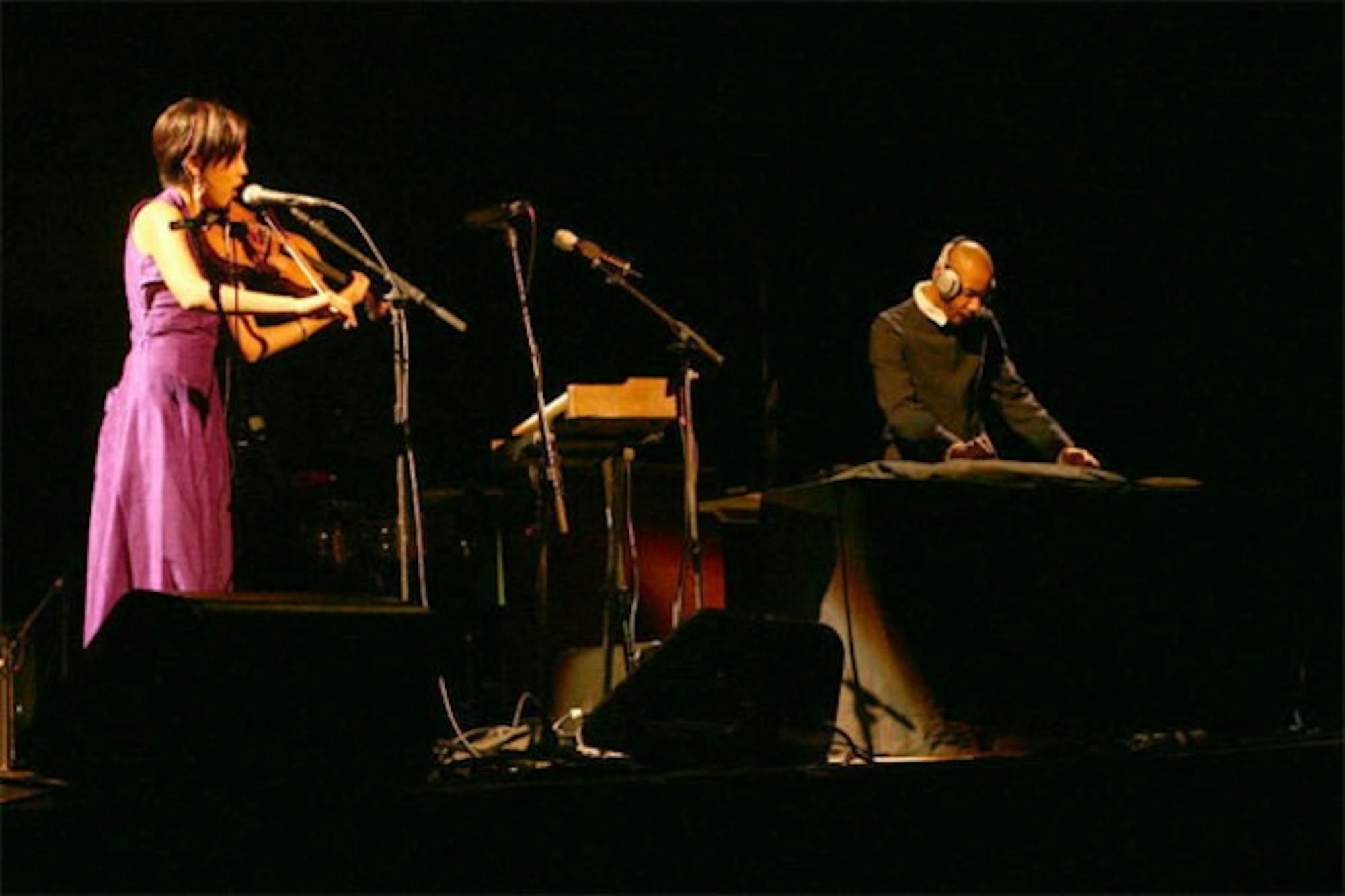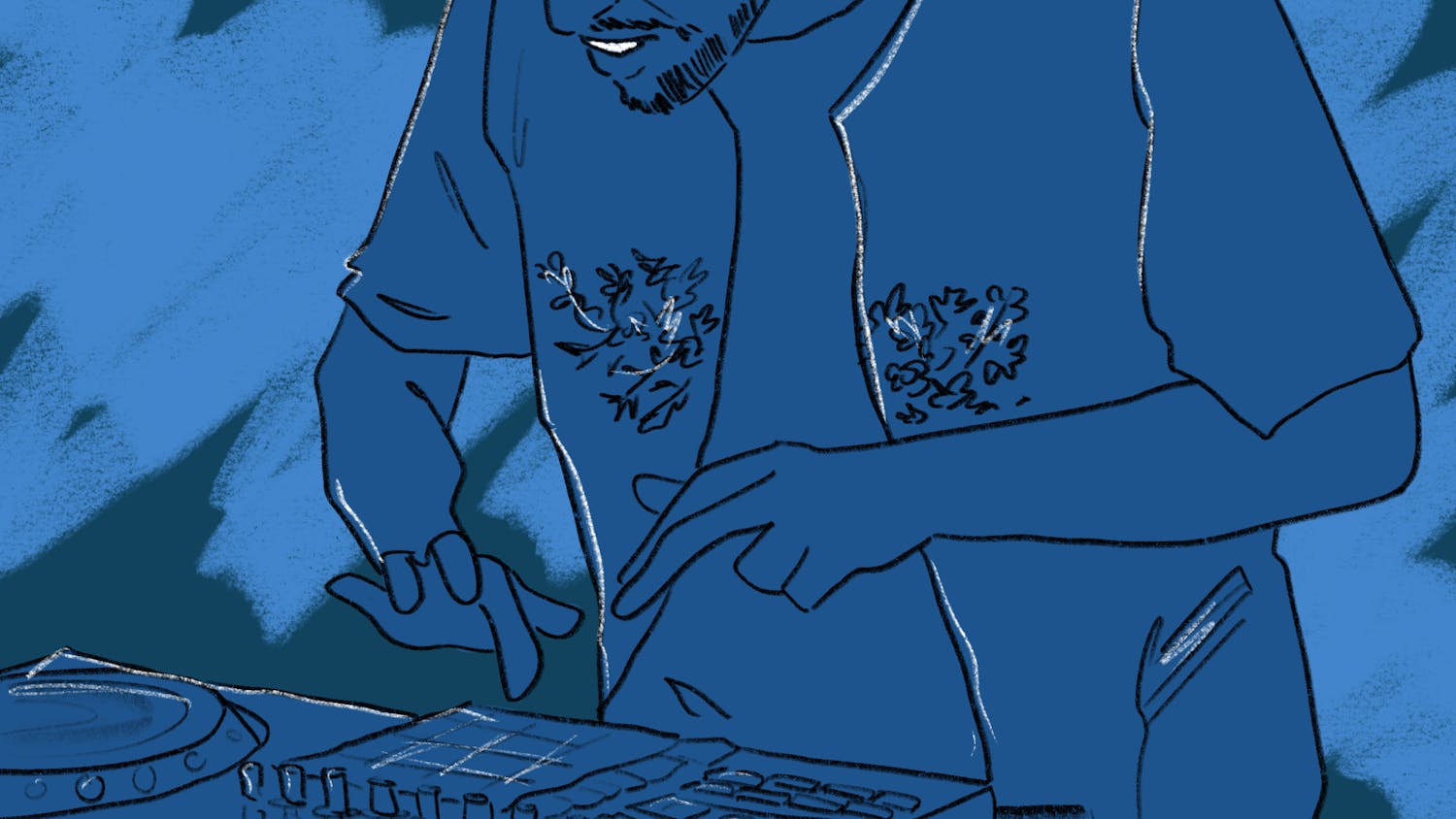Born in Washington, D.C., Miller is currently in residence at Dartmouth as a fellow at the John Sloan Dickey Center for International Understanding. The Hopkins Center for the Performing Arts commissioned Miller to develop and present his latest project, "Terra Nova: Sinfonia Antarctica."
Starting in 2007, Miller traveled across Antarctica with a portable studio and recorded the sounds of the continent and its ice flows for "Terra Nova." His project is intended to reconstruct the "media-free" continent through multimedia art.
"Terra Nova is a combination of things," said Miller. "It's classical music, it's electronic, it's conceptual art. I'm a big fan of saying that we need to think in multiple frames of reference."
He added that it is a work about metaphors, and that he drew inspiration from past musical works that placed emphasis on nature.
"There's a lot of classical music that focuses on the concept of landscape," he said.
"For example, Debussy's 'La Mer' is all about an impressionist scenario. That was inspiration for the project," said Miller, whose favorite artists include RJD2, Grandmaster Flash, Sarah Jones and Orson Welles.
Miller's web site, djspooky.com, describes the project as "an acoustic portrait of a rapidly transforming continent." The 70-minute piece, which Miller will perform at the Hopkins Center on April 15, will explore the relationship between man and nature.
During his time at the College, Miller will be researching the history of recent environmental struggles in Antartica using the Rauner Special Collections Library.
Some materials from Rauner will become a part of the visual component in his April performance
Miller first gained national recognition in 1998, when he composed the score for the film "Slam" (1998), which featured poet Saul Williams.
The movie won the 1998 Sundance Film Festival Grand Jury Prize and the Cannes Camera D'Or that year. Miller has also shown his work at the 2000 Whitney Biennial and the Venice Biennial for Architecture in 2000 and 2007, among many other prestigious international venues.
"Terra Nova," however, is not a new brand of art for Miller. His career has been focused on art as a medium of expression and how it constructs meaning. In 2004, he released a book with an audio accompaniment entitled, "Rhythm Science."
"I really enjoyed doing 'Rhythm and Science,'" he said. "It was one of the first times I realized that people liked seeing electronic music and literature together. It was a good opportunity to see how one could combine sound and image."
From his past explorations and the range of themes his work has addressed, Miller has learned that art and its forms are continually changing.
"Humanity derives meaning from whatever makes sense at the time," he said.
Nonetheless, one of his goals as an artist is to bridge the gap between past and contemporary media: "I think it's time to forge the connection."
Miller's new book "Sound Unbound" (2008) is an attempt to make this connection between old and new media.
Like "Rhythm and Science," Miller's latest release is a collection of essays with an audio component on CD. Its contributors range from acclaimed contemporary novelist Jonathan Lethem to rapper Chuck D of Public Enemy to alternative rock artist and producer Brian Eno.
"I wanted to put a lot of different opinions in the same book, kind of like a mix tape or a playlist book," he said.
The audio component features rare recordings of Sonic Youth, Iggy Pop and James Joyce. He added: "That's an even wilder mix than the book."
Miller makes such unlikely combinations in part because he believes in music as a universal medium that has the ability to deeply affect society and culture. He considers the role of a DJ to be the product of this universality -- an agent of this globalized art scene.
"Music speaks to everyone, every economic class. Basically you have to see it as a sort of universal language," he said.
"That's what makes DJ culture so amazing: It's moved so quickly over the past 10 years to really give a soundtrack to globalization," he said.
"It's turned the world inside out and given music to people from every part of the world to a point that they actively check out what's going on in other parts," Miller said.
Despite music's potential to create and influence culture, he believes some of its cultural effects can be adverse, such as when it skews people's views of other cultures.
Miller, however, does not let this discourage him. He believes diversity of views and exchange between cultures ultimately benefits the art. One view cannot corrupt another, he believes, since this interaction is how views and cultures evolve.
"I'm all about the mix," he said. "I don't think we can say that one culture is better than the other. The mix means we all share and exchange, and that's how we make culture a more robust situation. America is just one scenario, and we really have to think about a future world where it's not going to be the measure for global culture."
He added: "I'm an artist who uses collage for everything, so recorded media is just one aspect of my palette. I just want people to be inspired by how DJ culture can combine so many different things."
DJ Spooky's "Terra Nova: Sinfonia Antarctica" shows at the Hopkins Center on April 15th at 7p.m.




